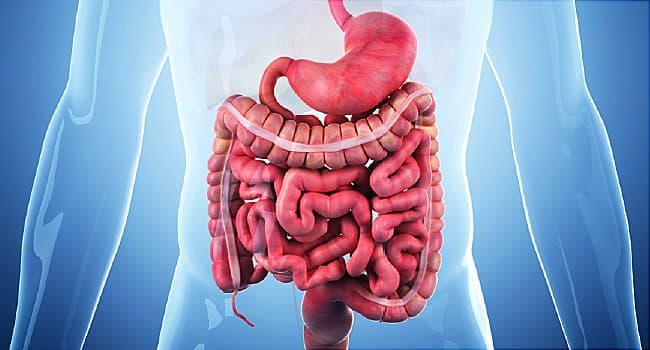May 2, 2024 – More than 1 million Americans live with Crohn’s, a chronic and sometimes crippling inflammatory bowel disease that affects the intestines and leads to digestive issues. While some people may have mild symptoms or even be symptom-free at times, others get severe belly pain, diarrhea, fatigue, weight loss, anemia, and other life-threatening complications.
So far, the condition doesn’t have a cure, and treatments are often limited. Typical drugs to treat it, such as steroids and immunosuppressants, can provide relief and slow the disease’s progress, but many patients say the drugs don’t work as well over time or don’t respond at all. Although surgery may be an option in some cases, both patients and doctors eagerly look for new therapies that can help relieve symptoms and also lead to a better quality of life.
In recent years, gastrointestinal researchers have sharply focused on solutions for IBD overall and Crohn’s in particular. As research dollars have flowed in, GI experts across the U.S. have tested new medications that target inflammation and autoimmune reactions, as well as fecal transplants that can transfer “good” bacteria from a donor’s digestive system to help improve gut flora.
In 2024 alone, several developments have been announced that could bring relief in different ways. In California, for instance, researchers are developing a type of stem cell therapy that may help heal the intestinal lining and prompt a positive response from the immune system. The therapy has shown promising results in mouse models but still needs to be tested in human clinical trials. But it could provide an avenue for patients who don’t respond well to standard treatments or the latest medications.
“In the last 10 years, a lot of new therapies and biologics have been expanded for IBD, but these medications come with a risk of side effects, and at best, half of the patients don’t have a response. And if they have a response, the longer they’re on the medications, the more likely they are to lose that response,” said Maneesh Dave, MD, an associate professor of medicine in gastroenterology and hepatology at the University of California, Davis.
Studying Stem Cells
Dave, who leads the stem cell therapy research at UC Davis, pointed to other issues with current medications. Severe side effects can create blood clots in the heart, lungs, and legs. These drugs often suppress the immune system, which can lead to a higher risk of infections and even cancer. That’s why Dave and others are working on solutions to increase response rates, reduce side effects, and get as close to remission as possible by treating inflammation and healing the gut.
In a study published in January in npj Regenerative Medicine, Dave and colleagues studied how cells called human bone marrow-derived mesenchymal stem cells (hMSCs) can heal inflammation in mice that have a type of chronic small intestine inflammation that resembles Crohn’s in humans. When given the hMSCs, the mice had mucosal healing and an immunologic response – even weeks after the hMSCs were no longer present.
“These cells can suppress the immune system and result in regeneration of the intestinal lining, which is quite promising,” Dave said. “There’s a precedent for this in Europe, where the cells are already approved for treatment of specific conditions, but we don’t have proof for that in the U.S. yet, and clinical trials are ongoing.”
As these types of studies continue, Dave cautioned IBD patients against going to unregulated stem cell clinics, which offer therapies that aren’t yet proven. The FDA hasn’t approved any treatments in this area, so stem cell offers are “still experimental” in the U.S., he said, and could lead to infections or other serious complications.
Feeling the Flare-Up
When people with Crohn’s disease have flare-ups, they often report belly pain, diarrhea, and sometimes stool with blood or mucus. This shift in symptoms means there’s inflammation in the body – and it needs healing. At Northwestern University, a team of scientists have developed a wireless implantable temperature sensor to detect these inflammatory flare-ups, with the hope of preventing or limiting the damage.
“Changes in temperature are a hallmark sign of inflammation, and prolonged inflammation can cause extensive damage to that tissue or organ, which may lead to eventual whole-system disruption,” said Arun Sharma, PhD, a research associate professor of urology at Northwestern’s Feinberg School of Medicine and a research associate professor of biomedical engineering at the McCormick School of Engineering.
In a study published in March in Nature Biomedical Engineering, Sharma and colleagues tested whether a temperature sensor – a tiny, soft device that rests against the intestines – could provide real-time insights about disease progression and flare-ups in mice with Crohn’s disease. The researchers used the sensors to continuously track changes in temperature for about 4 months and found the size of the flare-up could be tracked based on the heat signature. That means doctors could potentially act early to help patients, rather than wait weeks to test blood, tissue, or fecal samples.
Now that they’ve found successful results in mice, Sharma and the research team plan to test the sensor in human tissues that re-create the inflammatory conditions found in Crohn’s disease. These types of sensors could also be useful for patients with ulcerative colitis, which is another inflammatory bowel disease, or other conditions with prolonged inflammatory responses, such as organ transplantation.
“If there is a platform that could monitor the flare-up in real time, this would be significant so the treating physician can take appropriate and timely actions to help remedy the situation,” he said. “With the technological advance that we have described, this could one day become a reality so quality-of-life metrics for those afflicted can be greatly enhanced.”
Caring for Kids
Across the U.S. and Canada, IBD specialists who focus on pediatric patients are working together to find better solutions for kids. Called the CAMEO Study (Clinical, Imaging, and Endoscopic Outcomes of Children Newly Diagnosed with Crohn’s Disease), the research aims to understand why some children who receive standard treatment with anti-tumor necrosis factor (anti-TNF) medications achieve mucosal healing and some don’t.
“Few studies involve Crohn’s therapy in children, and all drugs on the market were based on large-scale studies in adults,” said Neal LeLeiko, MD, a professor of pediatrics at Columbia University and director of the pediatric IBD program at NewYork-Presbyterian Morgan Stanley Children’s Hospital. LeLeiko is the NewYork-Presbyterian/Columbia site investigator for the CAMEO Study.
In particular, researchers hope to find the best anti-TNF dosing for children, which can vary by weight. As children receive the drug by IV and improve, for instance, they often gain weight, but the prescribed medication dosing may not change, which could then result in a drop in efficacy, LeLeiko explained. A critical part of the study depends on a technique known as “therapeutic drug monitoring,” where researchers carefully measure routine bloodwork for the anti-TNF drugs and various aspects of healing.
“I see too many patients who experience failure of anti-TNF drugs due to previous physicians who didn’t know how to use the drug properly,” he said. “As I always say, ‘If this were my child or grandchild, what would I do?’ We need to know how to best use these drugs in children in the safest way.”













![Ep265: [Lean Series] 5 Ways You’re F*cking Up Your Fat Loss Ep265: [Lean Series] 5 Ways You’re F*cking Up Your Fat Loss](https://carrotsncake.com/wp-content/uploads/2025/01/IMG_3025-768x1024-1.jpg)





Discussion about this post